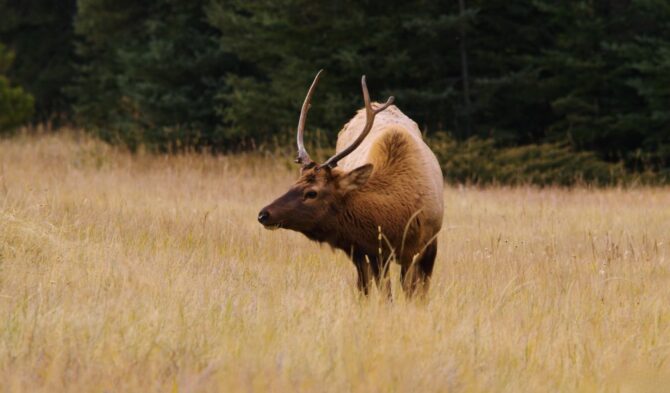Maine is a breathtaking state that promises visitors unforgettable experiences, from majestic waterfalls and parks to stunning lighthouses and towering pine trees.
While the state is free of snakes and spiders, this does not mean that the outdoors is entirely safe.
You should exercise caution, as some of the most dangerous animals in Maine, such as coyotes, bears, and moose, are not particularly friendly towards humans.
To help you stay safe during your visit, we’ve compiled a list of the top ten most deadly creatures in Maine.
In addition to the list, we’ve also provided essential wildlife safety tips for exploring the state.
What are the Most Dangerous Animals in Maine?
1. Coyotes
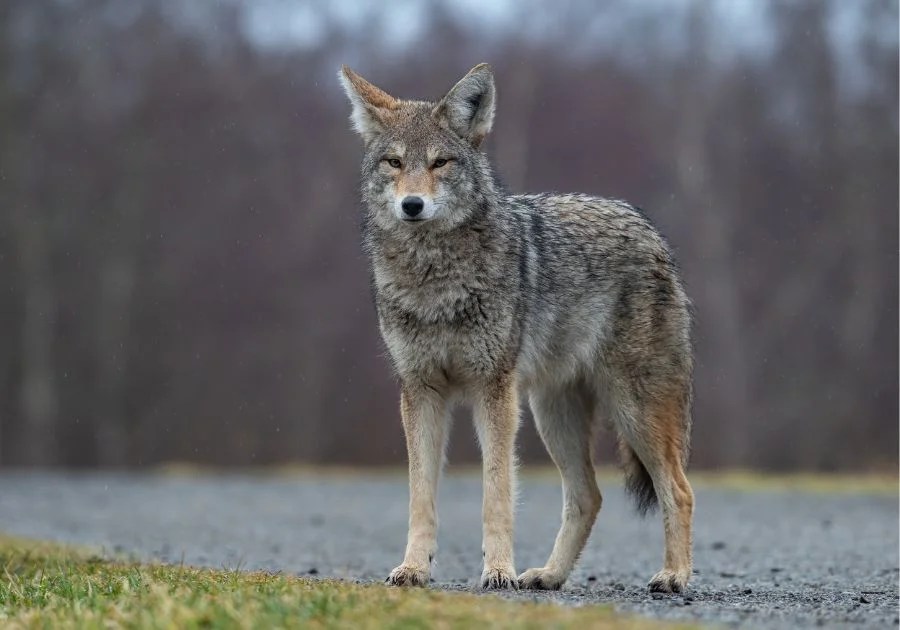
- Scientific Name: Canis Latrans
- Habitat: Woodland, prairie, desert, oak savannahs, temperate rainforest
- Threats: Aggressive pack hunters, potential disease carriers
The coyote is a member of the Canidae family, alongside wolves and jackals.
It was even once called the American jackal, and some people still refer to it as such. It is also called the prairie wolf and the brush wolf.
Coyotes tend to shy away from humans and are perhaps more scared of us than we are of them.
However, this doesn’t stop these wild dogs from attacking humans occasionally. Coyote attacks are rarely deadly, but there have been some fatal accounts.
Experts wonder whether coyotes are no longer as scared of humans as they used to be, but you don’t need to find out if this is true.
Avoid any coyote pack you see, and report it to the right authorities if you see anyone misbehaving in a wildlife park.
2. Moose
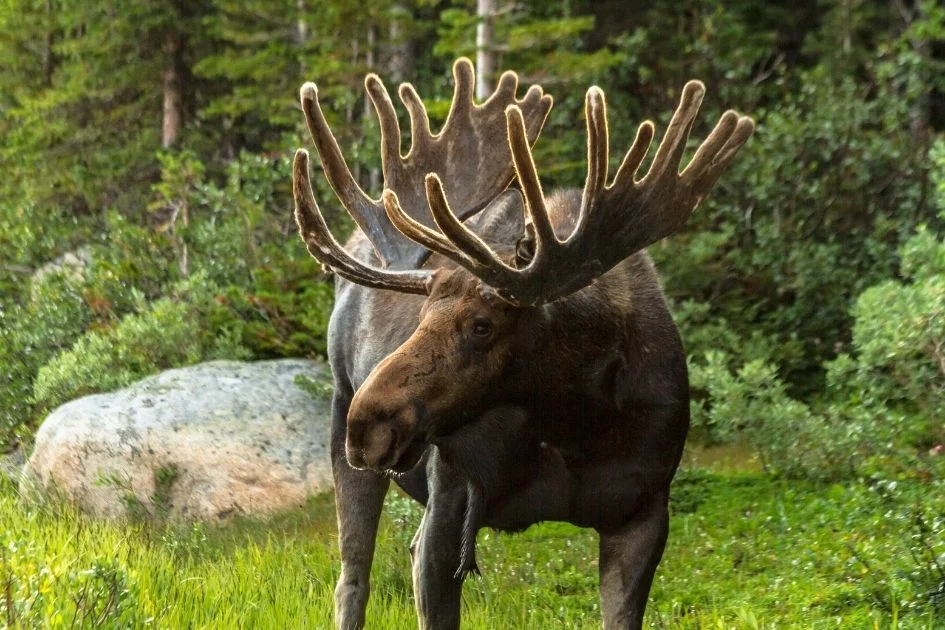
- Scientific Name: Alces alces
- Habitat: Boreal forests
- Threats: Large, aggressive, territorial
The moose is a bulky herbivore that doesn’t seem dangerous at first glance. What would a grass eater want from humans?
While it may not view us as prey, humans can be threats to the moose, leading to an attack. The moose has a temper and do not want to be provoked.
Startling a moose is one way to make it feel threatened. It would also feel that way if you get too close or if it has a baby.
Try not to be too noisy when approaching a moose, and do not get too close, especially if the moose is a mother.
3. Black Bears
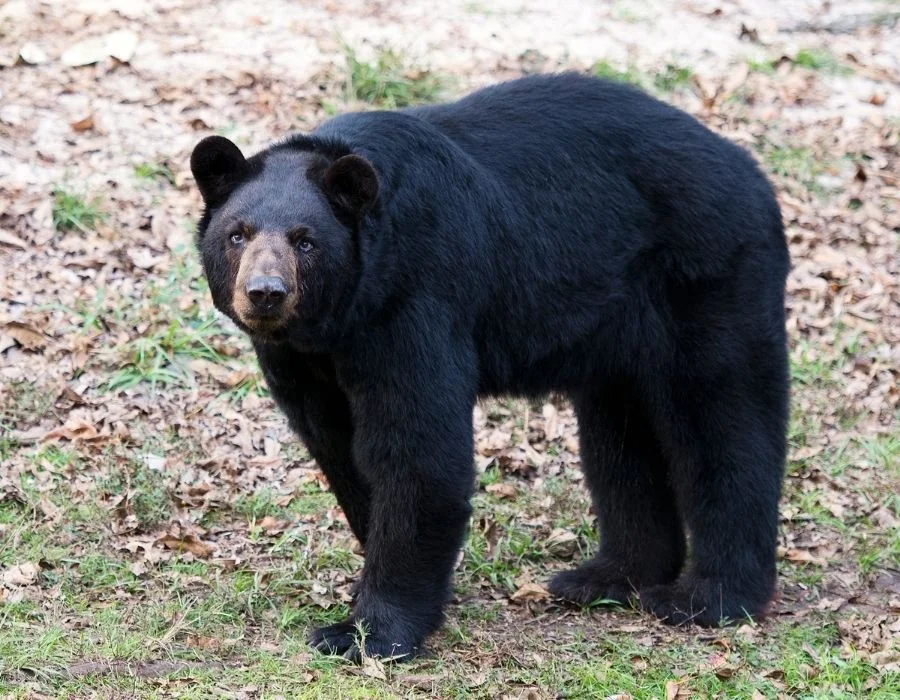
- Scientific Name: Ursus americanus
- Habitat: Forests, mountains
- Threats: Strong, unpredictable, can attack when threatened
The black bear is considered small compared to other bears, and it is less likely to attack a human. This doesn’t mean it can’t attack, however.
This timid bear can become a violent monster if provoked, and though it threatens more than it attacks, it won’t be stopped once it does.
Like the coyote and the moose, avoidance is better than any calming tactic you know. When you can, do not let the black bear see you.
If it does, remain calm and back away slowly while talking in an assured voice.
4. Ticks

- Scientific Name: Ixodes scapularis
- Habitat: Wooded and forested areas
- Threats: Disease-carrying bloodsuckers that can transmit Lyme disease
The tick is the smallest animal on our list, but it isn’t the least deadly animal. If anything, it is considered one of the most dangerous animals in Maine.
A tick is the size of a mustard seed, which makes it hard to detect. As a parasite, it feeds on the blood of the host.
The major danger of the tick is the diseases it carries. It can infect you with many diseases, including Anaplasmosis, Powassan virus disease, and one of the most notorious of them all, Lyme disease.
Symptoms of Lyme disease include fever, chills, headache, and fatigue.
You can protect yourself from getting bit by wearing long sleeves and trousers. Insect repellent would also go a long way.
5. Snapping Turtle

- Scientific Name: Chelydra Serpentina
- Habitat: Ponds, streams
- Threats: Powerful bite, sharp jaws, can cause serious injury
The snapping turtle also doesn’t look dangerous, and compared to the animals we’ve seen, it is relatively harmless.
It will not launch a preemptive attack and minds its business. However, it is called a ‘snapping turtle’ for a reason. It can bite, and the bite hurts more than people imagine.
This makes it difficult to keep a snapping turtle in captivity. Though some snapping turtles are raised on Chinese farms, they can only be handled by experts.
Snapping turtles can bite even when picking it up. The only good part is that it hisses before it bites.
6. Fisher

- Scientific Name: Pekania pennati
- Habitat: Forests
- Threats: Aggressive carnivores, known to attack humans when provoked
The fisher is an arboreal mammal that might look like a giant rodent at first glance. However, it is not a rodent.
It is sometimes called a fisher cat, but that’s considered misleading because the fisher is not a cat.
Fishers do not have many predators besides humans, so they may have no prey fear in it. That would explain its viscous nature.
While it often goes after what it considers prey (like rodents and your cute pet cat) but can also attack humans, especially children.
7. Porcupine
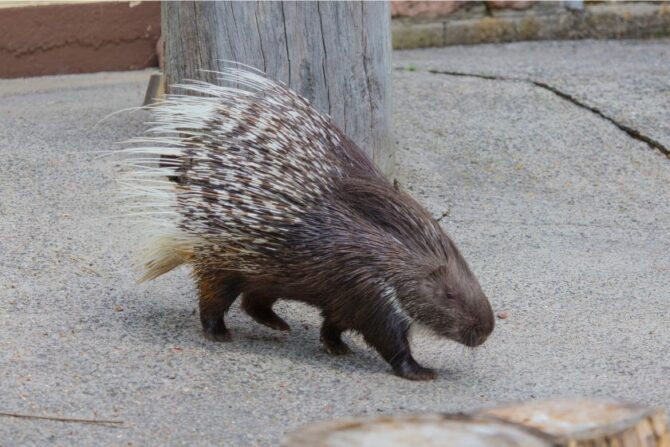
- Scientific Name: Erethizon dorsatum
- Habitat: Forests, shrublands
- Threats: Can inflict painful quill injuries if threatened or cornered
A look at the porcupine is enough for you to know how dangerous it can be.
Because it is a rodent, it might look like a harmless rat, but make no mistake; the porcupine defends itself from anyone, including humans.
Though it doesn’t shoot out its spikes like we once thought, porcupines can still pierce their enemy with the spikes if threatened.
You should stay far away from a porcupine if you want to observe it.
The spike can kill a dog and may become fatal to a human if left in the skin for long.
8. Red Fox
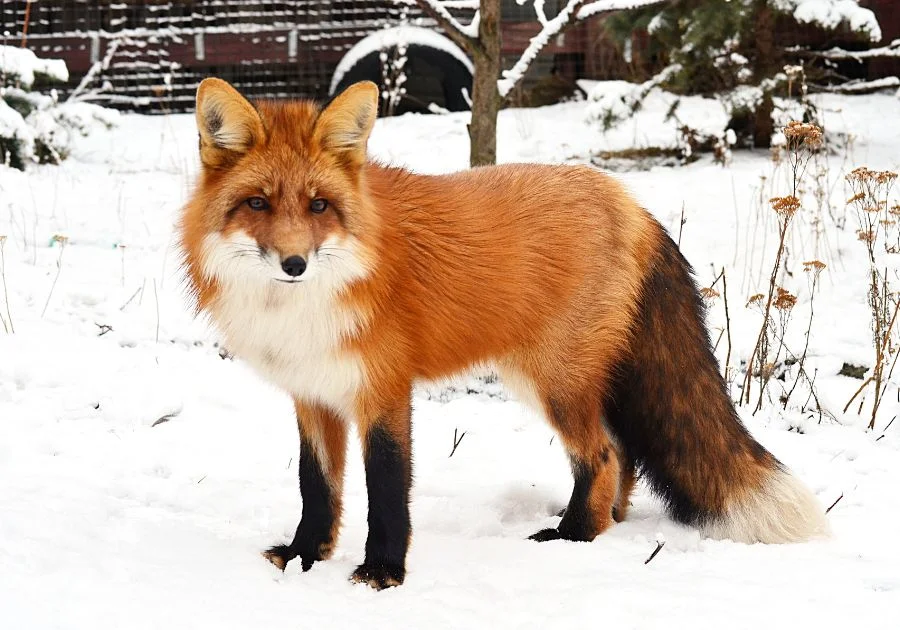
- Scientific Name: Vulpes vulpes
- Habitat: Grasslands, forests, mountains, deserts
- Threat: Rabies
The red fox can be found in different parts of the world as it is a widely distributed true fox. It is also the largest true fox in the world.
The red fox is often depicted as cunning in folktales and is hunted a lot, but many people don’t realize how dangerous it can be.
The red fox tends to avoid humans and is wary of us, but when infected with rabies, they can be unpredictable.
A red fox with rabies may attack without provocation. Its bite is a health hazard as well.
9. Browntail Moth Caterpillar
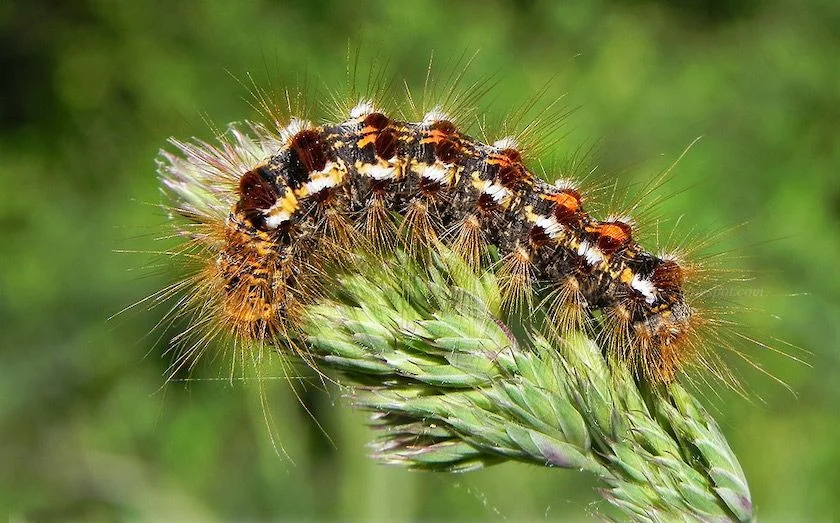
- Scientific Name: Euproctis chrysorrhoea
- Habitat: Trees, lawns, gardens
- Threats: Can cause skin irritation and respiratory problems
The brown-tail moth caterpillar can be found only in Maine, and the danger it poses differs from other animals on this list.
The brown-tail moth caterpillar doesn’t attack people, but the hair it sheds is where the problem lies.
The caterpillar’s hairs are toxic to humans, and when it gets into contact with us, it causes rashes and breathing difficulties.
The hair is airborne, and you may not even know you’re being affected because of how small the hair is.
10. Western Honey Bees
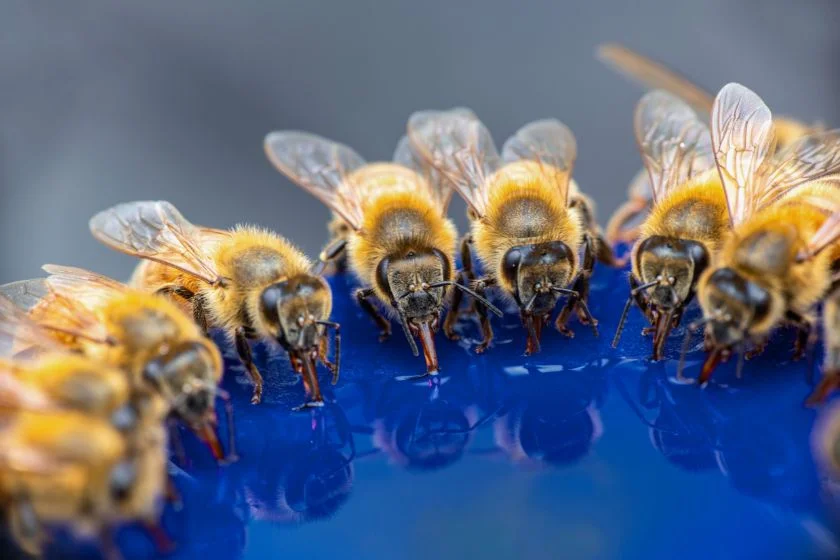
- Scientific Name: Apia mellifera
- Habitat: Orchards, meadows, gardens
- Threat: Territorial, painful sting can be fatal to someone with an allergy
The western honey bee is one of 12 honeybee species and the most recognized worldwide.
These bees can be found on every continent except Antarctica, which is responsible for the honey we enjoy.
It has also been domesticated, though some wild bees exist.
What makes the western honeybee dangerous?
The answer is Its protective nature. All honeybees don’t fancy being threatened or having their hives interfered with.
They also attack in colonies, so the chances of getting stung multiple times are high.
The western honey bee’s sting is painful and can be fatal for someone who’s allergic.
Maine Wildlife Safety Tips
Ready to go on a trip to Maine? Hold on to these tips when you want to explore areas where dangerous animals might be.
Some of these Maine wildlife safety tips can save your life or at least protect you from landing in a hospital ward.
Here they are:
- If driving, maintain the required speed limit so you won’t accidentally hit an animal while you explore.
- Keep a reasonable distance from any animal you see, especially if it’s dangerous. We recommend holding binoculars to view them up close without drawing closer.
- Learn more about the wild animals you might meet in Maine, including what you should do if you encounter them. To get you started, here are some resources for the black bear, the coyote, the fox, and the moose.
- Have an insect repellent at hand, and wear an outfit that covers you well to avoid tick bites.
- Do not touch any animal, try to destroy any nest, or get too close to a hive.
Related Questions
Are there wolverines in Maine?
There once were wolverines in Maine, just like in many other states, including California, Arizona, Colorado, Idaho, Pennsylvania, Ohio, New York, and New Mexico.
What is the deadliest animal in Maine?
Maine is one of the safest places to travel as there aren’t many dangerous animals, but there are three that are considered very deadly. The black bear, the moose, and the tick are the deadliest animals in Maine.
Are there grizzly bears in Maine?
The only bear that’s reported to be in Maine is the black bear. The grizzly bear exists in many other states but not in Maine.
Are there any venomous animals in Maine?
The absence of venomous snakes and spiders makes Maine safer than many other states in the US. Though there are ticks that carry diseases and caterpillars with toxic hair, it’s an advantage for Maine not to have any snakes and spiders.
Final Thoughts
Maine is considered safer than many other states, but that’s not without some challenges in the fauna aspect.
You should avoid these deadly animals in Maine, USA.
Fortunately, there aren’t too many of them, and there aren’t any apex predators or poisonous reptiles to contend with.

